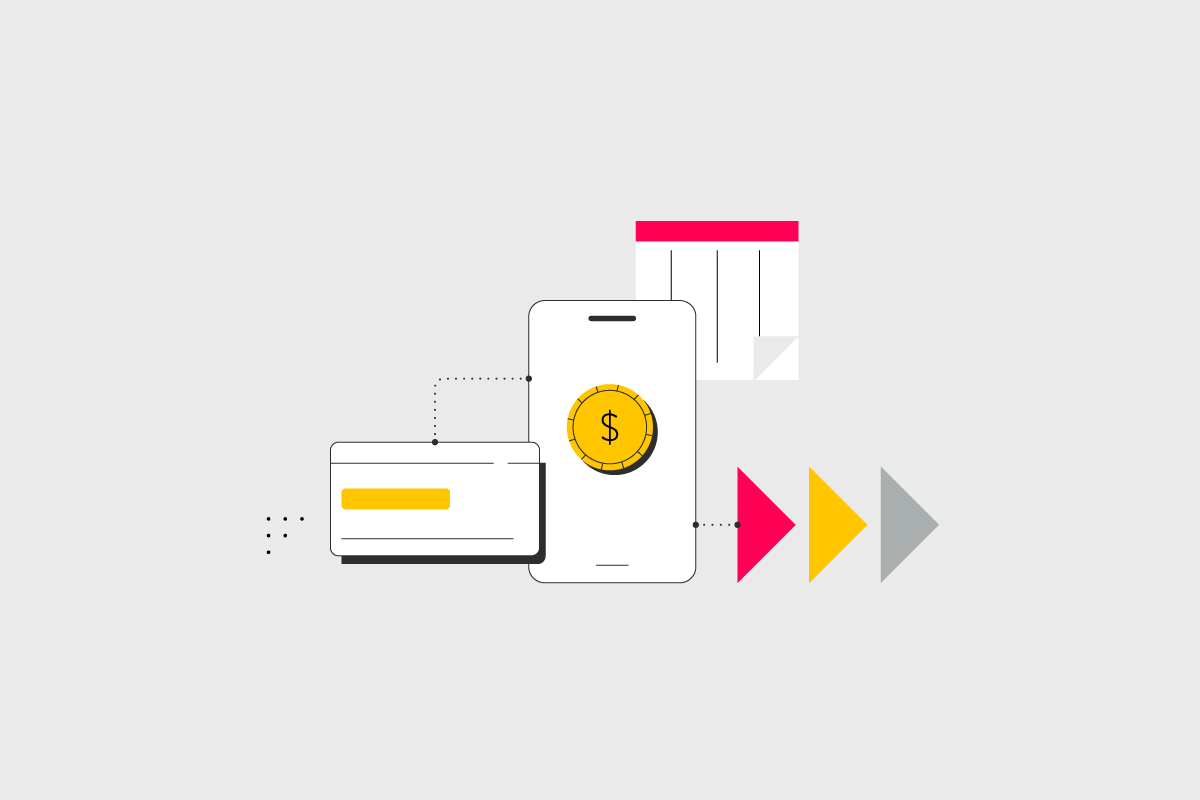Blog
BNPL vs pay by bank: What is best for my business?
June 8, 2023
Editorial Team

Buy Now Pay Later has been a major trend in the world of consumer-to-business payments in recent years. By contrast, pay by bank is a much newer payment method, which — although it is fast gaining traction in other markets — is still nascent in the US. Whereas BNPL is a form of short-term financing that enables consumers to make purchases and pay for them over time, from your credit card, bank account, or other source, pay by bank is a more straightforward payment method, where a consumer pays directly from their bank account to the merchant’s.
But as a merchant, what is the best payment method (if any) for your business? In this post, we will look at six criteria, and what you should consider when comparing the two payment methods.
1. The customer experience at the checkout and beyond
The onboarding experience of BNPL for first time users is one of its attractions. Normally, a customer only has to fill out a few details to enable the BNPL provider to run a soft credit check before they can get started. And since there are no fees for customers, it has an advantage over the interest and card fees that customers have to pay for with credit cards. Nonetheless, there are downsides to the customer experience, too. Over half of BNPL users have admitted to regretting a purchase because it was too expensive, and over half have fallen behind on payments. It’s also important to note that many customers report being hit by surprise fees.
With pay by bank, the payment flow looks like this:
On the checkout page, the customer will see the pay by bank option.
Once this is selected, the customer will be prompted to choose their bank from a list, and be redirected to their bank app or website.
The customer authenticates the payment the same way they normally log in to their bank account — with a password, face ID, fingerprint scan, or however they have it secured.
As you can see, pay by bank is also intuitive and straightforward. Customers don’t need to create an account, rather, they simply initiate the payment form their bank environment. And since the funds come directly from the customer’s bank account, there is no possibility that they can miss a repayment.
Winner: Both BNPL and pay by bank have quite strong propositions at the checkout. Buyer’s remorse is something that can happen with any payment method, but with pay by bank, the customer never needs to worry about repayments. However, if a customer wants to buy something and they don’t have funds, pay by bank won’t work for them (although it might be added that with over 60% of U.S. households live paycheck to paycheck, this is not necessarily a bad thing, although it can be an issue for some customers). The verdict? A tie.
2. Customer recognition and reach
BNPL has seen blazing fast adoption over the past few years due to its convenience for customers, coupled with the shift online during the pandemic. Between 2019 and 2021, the number of BNPL loans originated in the US by the top five lenders grew by almost ten times, and the dollar volume of BNPL loans grew by over ten times, from $2 billion to $24.2 billion. Furthermore, BNPL is now a widely recognized payment method that — due to its soft credit checks during onboarding — can help merchants reach a significant percentage of their target market through both existing and new users.
Pay by bank is still in its infancy in the US. However, since a customer only needs a bank account to complete a purchase with pay by bank, it instantly gives merchants access to the vast majority of the US banked population. For example, Link Money has connections to 3,400+ US banks, and 95%+ of the banked population, a figure that is increasing as time goes by. Pay by bank is not yet recognized by many US consumers, but as it happens in the customer’s trusted and familiar bank environment, the hurdle to adoption is quite low.
Winner: BNPL currently has much greater consumer recognition, although they both will help merchants reach the critical mass of US consumers.
3. Merchant fees
With BNPL, merchants pay a fee for every transaction completed, which is typically in the region of 2-8% of the sale cost. This is obviously quite a high cost, even compared to credit card processing fees.
An important thing to note about pay by bank is that transactions happen over the ACH network rather than card networks. This is important because it means that pay by bank is not hostage to the card networks’ high payment processing fees. As a result, a transaction with pay by bank is up to 70% lower than that of cards. At scale, this can save merchants millions of dollars in processing fees each year.
Winner: Pay by bank.
4. The regulatory landscape
With regards to regulations, the situation for both BNPL and pay by bank are not only what is in place currently, but how the landscape is likely to evolve in coming years.
For BNPL, the CFPB recently unveiled a study detailing the risks to consumers, including the potential for debt accumulation, and also for having their data harvested without their knowledge by BNPL providers. So while regulation is not an issue currently, it may become one in the near future, and may reduce the amount of data that providers can harvest (and leverage) from their customers.
By contrast, the risks for pay by bank are much lower. Indeed, if anything, regulation is likely to work to encourage adoption rather than curtail it. In particular, the Dodd Frank “Open Banking Rule” proposes giving consumers the right to control and share their financial data with banks and non-bank financial institutions through the use of APIs — in short, encouraging the open banking technology that pay by bank is built on. It is also worth noting that regulations favorable to pay by bank and open banking are a global trend, and in fact the US is behind the curve in terms of making banks open accounts to selected third parties.
With this in mind, the future looks uncertain for BNPL, but more favorable for pay by bank.
Winner: Pay by bank.
5. Basket size and average order size
There is a great deal of research that shows that BNPL options increase both the likelihood of the customer to make a purchase, and the size of the basket. In fact, according to some estimates BNPL options increase the likelihood of a sale by 20% to 30%, and boost the average ticket size up to 50%.
However, there is also a downside. An estimated 42% of BNPL users have made a late payment, and nearly 70% of BNPL users admit to spending more than they would if they had to pay for everything upfront — which, while this is good news for merchants, may not be sustainable in the long run. Furthermore, 23% of BNPL customers have regretted financing a purchase this way.
By contrast, there is not enough data on pay by bank to definitively say whether it increases basket size or order value. Based on the data above, we might assume that customers will be a little less likely to splurge with pay by bank than they would with BNPL. However, they may also be more likely to spend sustainably and responsibly, which could have positive implications for merchants in the longer run.
Winner: BNPL in the short term, but in the longer term the situation is less clear.
6. Recurring and subscription merchants
Although BNPL was not initially created for subscription payments, BNPL players have started to move into the space. And BNPL can help price-conscious subscribers to break up an annual subscription payment into smaller monthly or quarterly installments. For merchants — especially those who bill annually — this could unlock a new avenue of user acquisition for subscription services. Subscriptions, however, do not play to BNPL’s core strengths of impulse buying and splurging on high-ticket items. Further, for the many subscription merchants who bill monthly (or quarterly), the opportunity to break down payments into even smaller chunks is very limited.
An important challenge for subscription and recurring merchants is how to reduce involuntary churn, which accounts for up to 48% of all customer churn for subscription businesses. Almost all causes of involuntary churn are related to payment cards. But with pay by bank, there is no payment card involved — the payment is direct from one account to another. This innovation removes almost all the causes of involuntary churn.
So what does that mean for merchants? The closest proxy to pay by bank in the US market is ACH Direct Debit — in fact, pay by bank uses ACH rails to transfer funds. According to Chargebee, direct debit payments have a subscription failure rate of only 0.5% — orders of magnitude lower than cards.
While BNPL may have some limited use cases particularly around annual subscriptions, pay by bank has a particularly strong proposition for subscription and recurring business models.
Winner: Pay by bank in most use cases.
You may want both BNPL and pay by bank, not one or the other
In this post, we have laid out pros and cons of pay by bank and BNPL side-by-side in a (hopefully) relatively neutral manner. Having said that, some pros and cons are more important than others.
For example, If you're a merchant focused exclusively on basket size, BNPL may be a more effective option for you, at least in the short term. However, if you are interested in lower fees, customer experience, and working with a payment method that is likely to benefit from favorable regulation in the future, then pay by bank has the edge. And finally, if you are a merchant operating on a subscription or recurring basis, pay by bank offers clear benefits over BNPL.
Nonetheless, the good news is that pay by bank and BNPL are not mutually exclusive. So rather than an either/or question, for many merchants, BNPL and pay by bank are complementary payment methods to offer at the checkout, and help you cater to different consumer needs.
To find out more about Link Money - Pay by Bank, contact us.